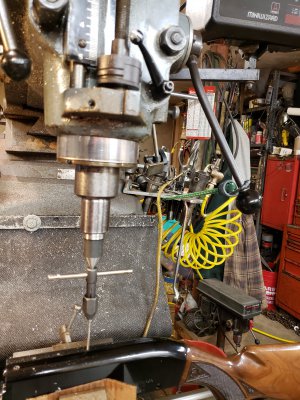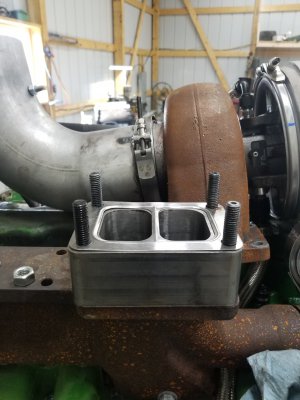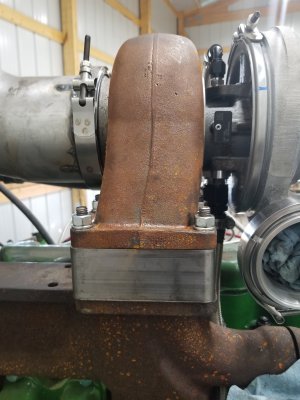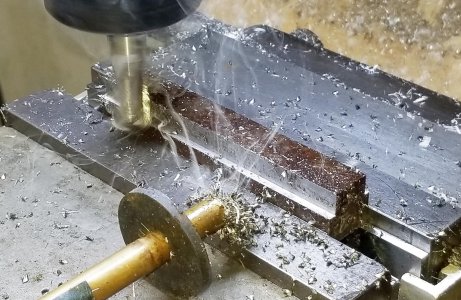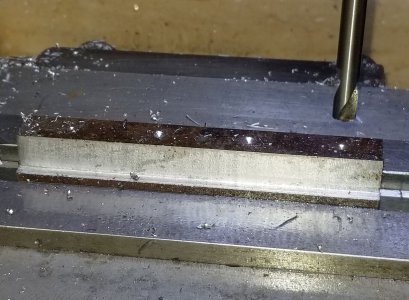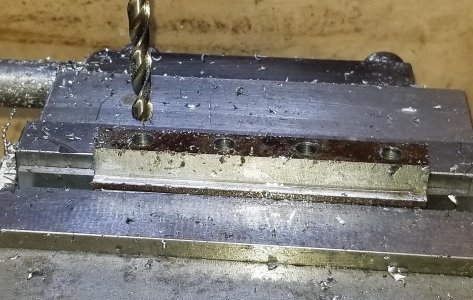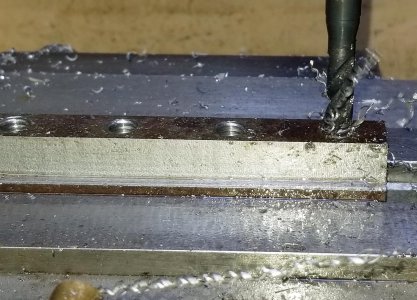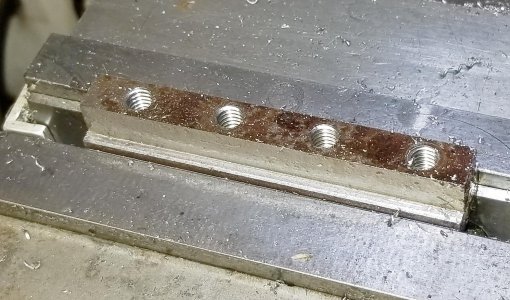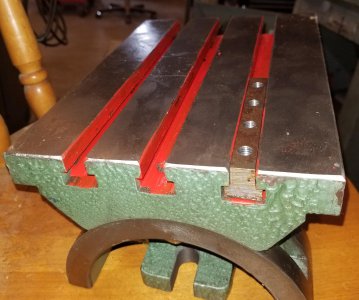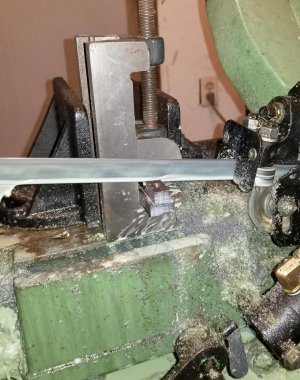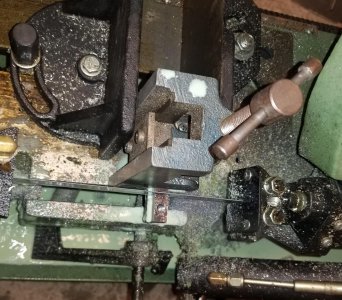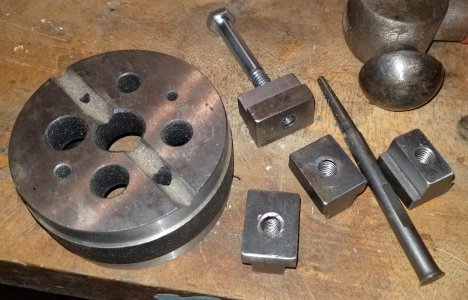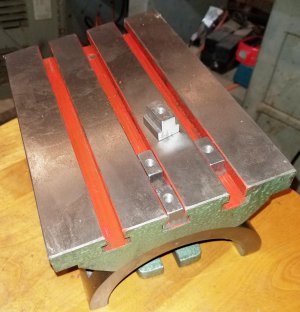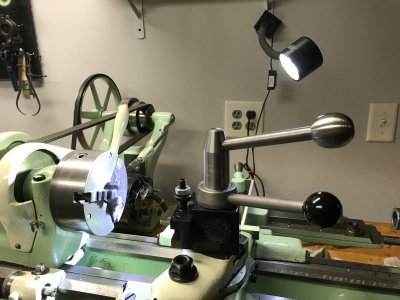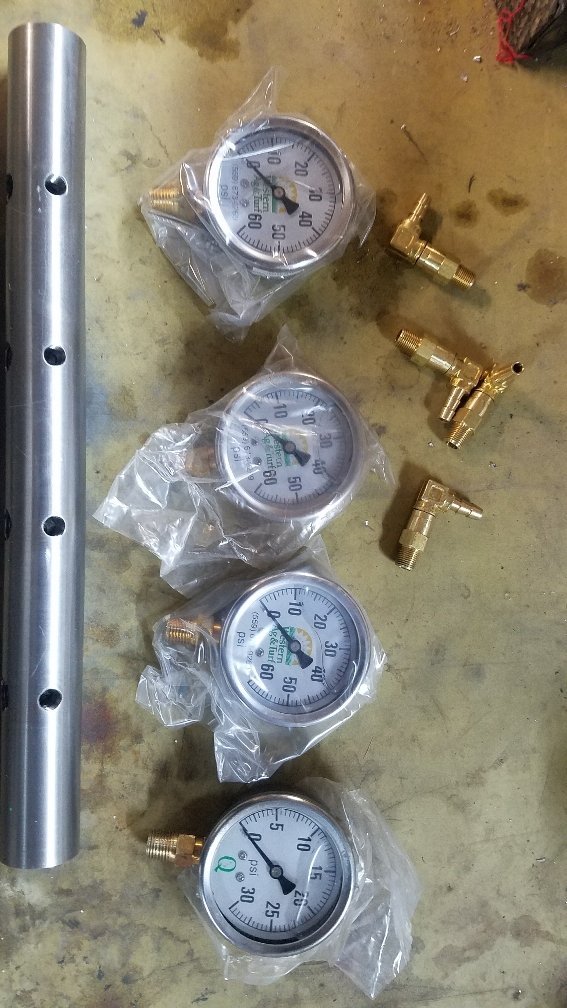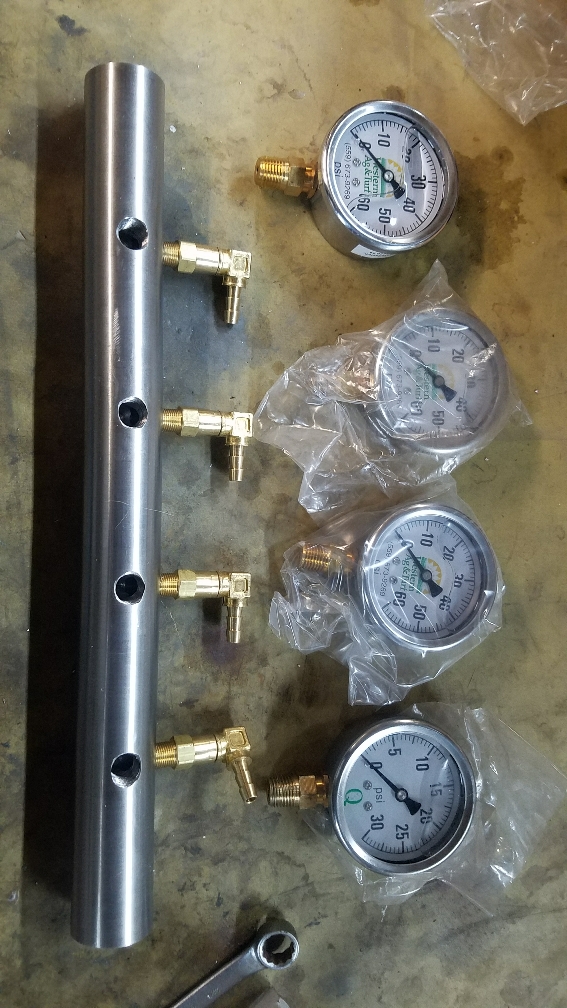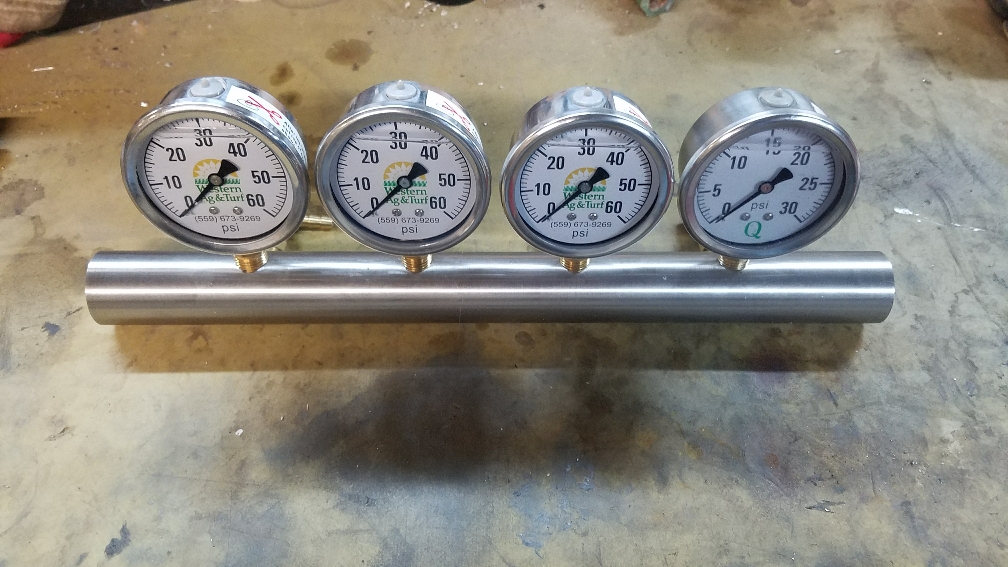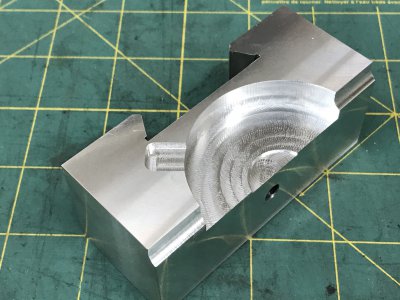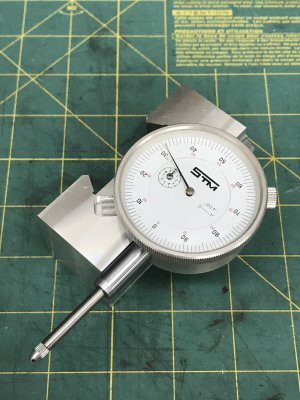POTD was continuing the work on the enclosure for my Tormach mill. I decided to go with front doors that will have slider doors, but will be on a frame that's hinged so the door frames can be swung open to give full access to the mill.
Started by turning some Delrin bushings to fit into the tubular framed doors. Simple lathe job, turn the OD to a snug fit in the Creform tubing, face, chamfer, center drill and drill hinge pin holes.
Face/chamfer the bushing
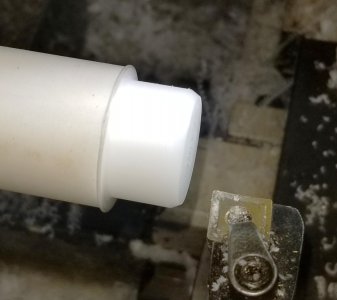
Parting
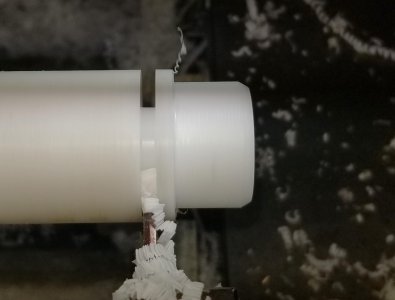
Center drill and drill a hinge pin hole
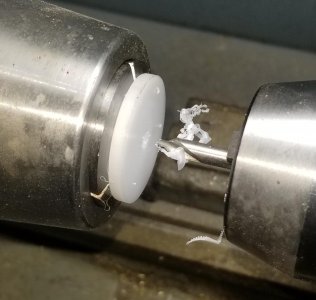
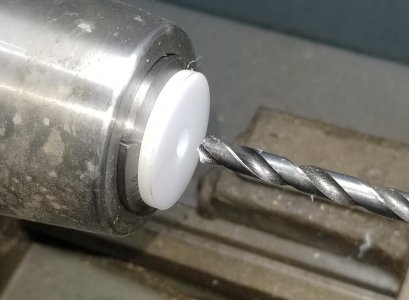
The corners of the enclosure frame will have 1/4" hinge pins. Plan is to have a fixed pin on the bottom and a removable one up top. The door frames will be removed by pulled the upper pin, then lift the door off the lower pin. Naturally, with the hinge they can be swung open too.
Drilling a 1/4" hinge pin hole in the Creform corner bracket.
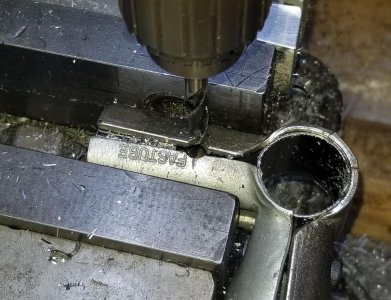
Bushing fits over the hinge pin. Door frame tubing fits over the bushing.
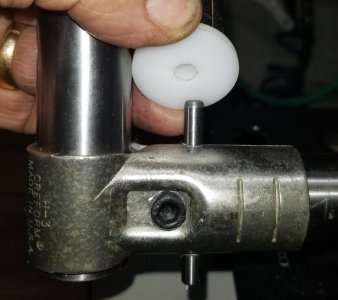
Upper door frame hinge pin will be removable. Plan was to have a bushed hole for the hinge pin.
Drilling the upper bushing hole (F drill for an 0.257" hole for some clearance to the 1/4" pin).
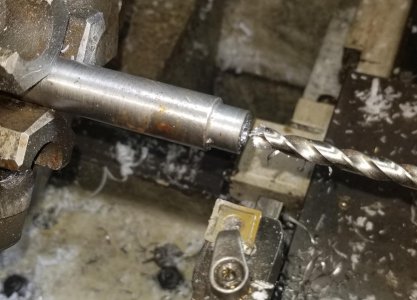
Turn the OD to 1/2"
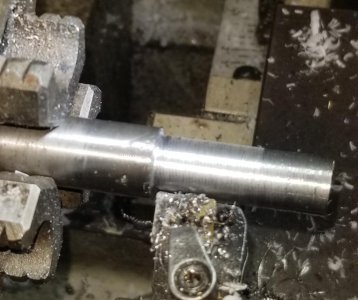
Parting
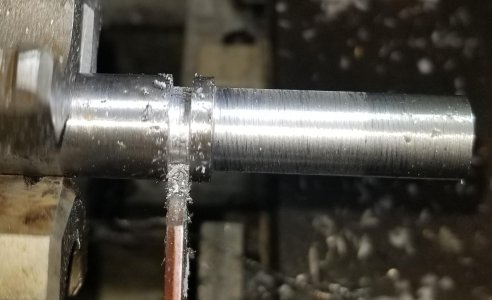
Chamfered a lead-in on the top of the bushing.
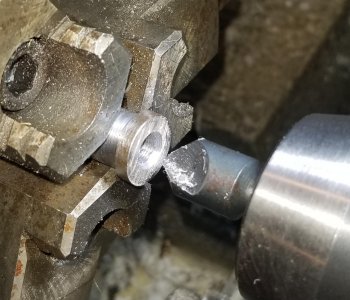
Drilled a 1/2" hole through the upper corner brackets for the hinge pin bushings.
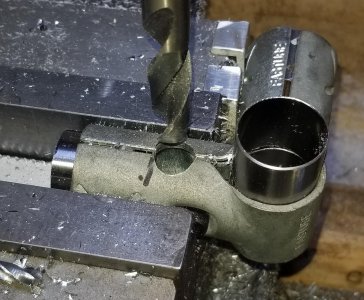
The upper hinge pins were made from 1/4" 303 stainless. Started by running a 1/4"-20 die over the end.
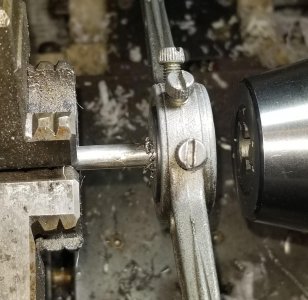
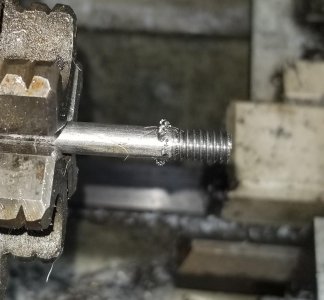
Parted and flipped, then chamfered the lead-in end.
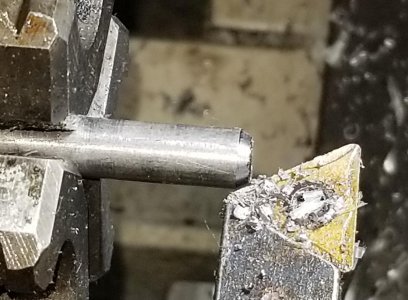
Next, made a couple of knobs for the removable hinge pins from aluminum. Did a clean up pass, knurled, tapped and parted. Finished the faced end by screwing the 1/4" pin in place, then chucked and faced.
Clean up pass on some 1" aluminum
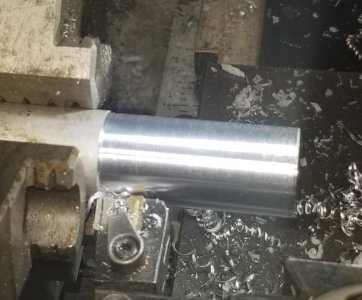
Knurled
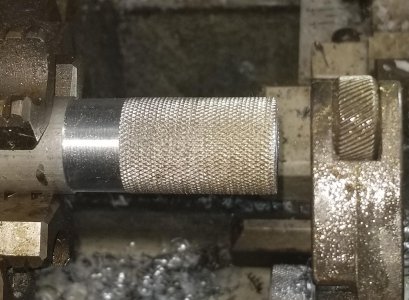
Center drilled, tap drilled, tapped and parted.
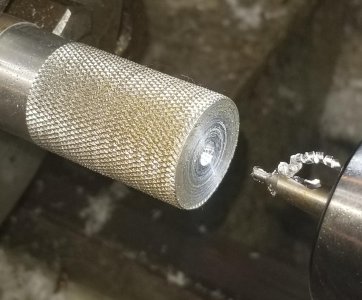
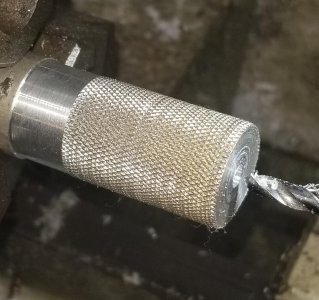
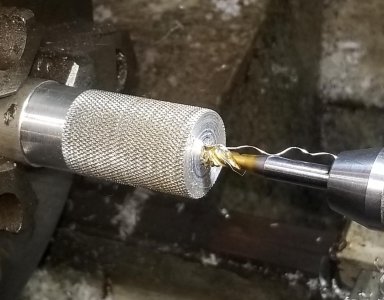
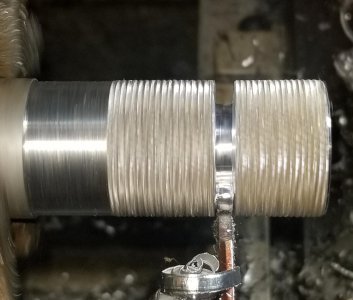
Facing the parted end and the final two upper hinge pins.
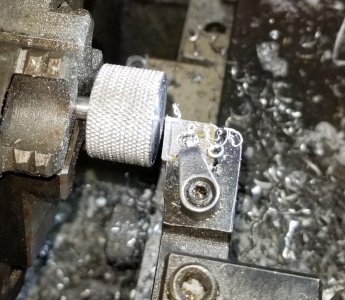
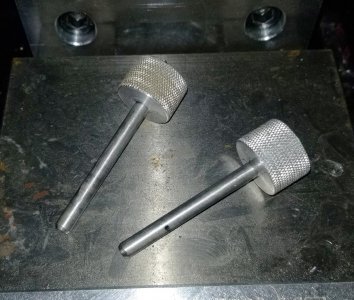
Upper hinge pin into the door frame bushing. The door can be removed by pulling this pin, then lift the door off the lower hinge pin.
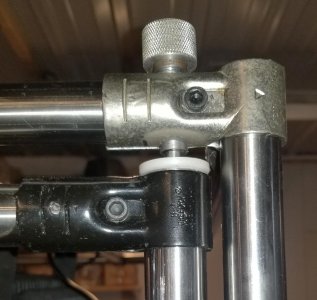
Door frame lower hinge pin.
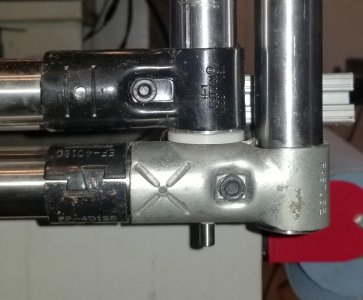
Door frames in place. The center area will have door panels that slide open for quick access. The door frames can swing open for full access to the front of the mill.
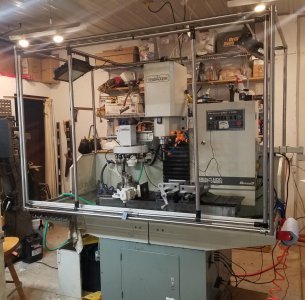
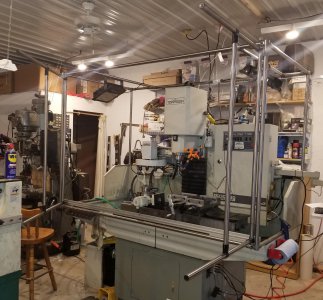
As you can see, lots more to do:
Locking pins to hold the door frames in the closed position.
Move the monitor/keyboard swing arm to outside the enclosure.
Fab up a rail system for the front sliding doors.
Make a work table for the overhang at the front of the mill.
Make splash shields for the end panels, and the removable end panels.
Fab up a top.
Shower curtain for the back wall.
Mount the Mistaway air filtration system up top.
Probably a few more things I've forgotten, but am making some progress. Thanks for looking,
Bruce

 www.hobby-machinist.com
www.hobby-machinist.com

 www.hobby-machinist.com
www.hobby-machinist.com


